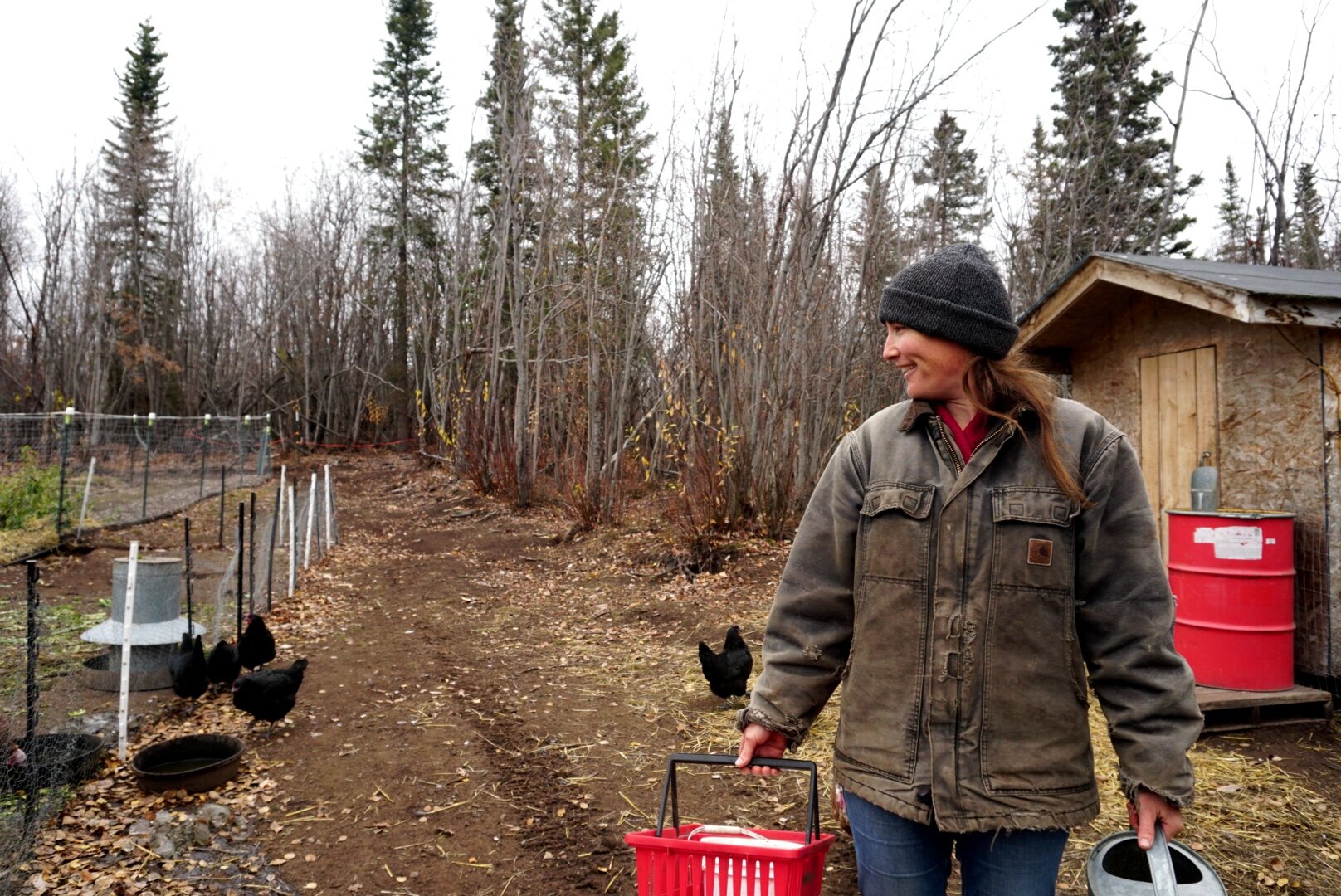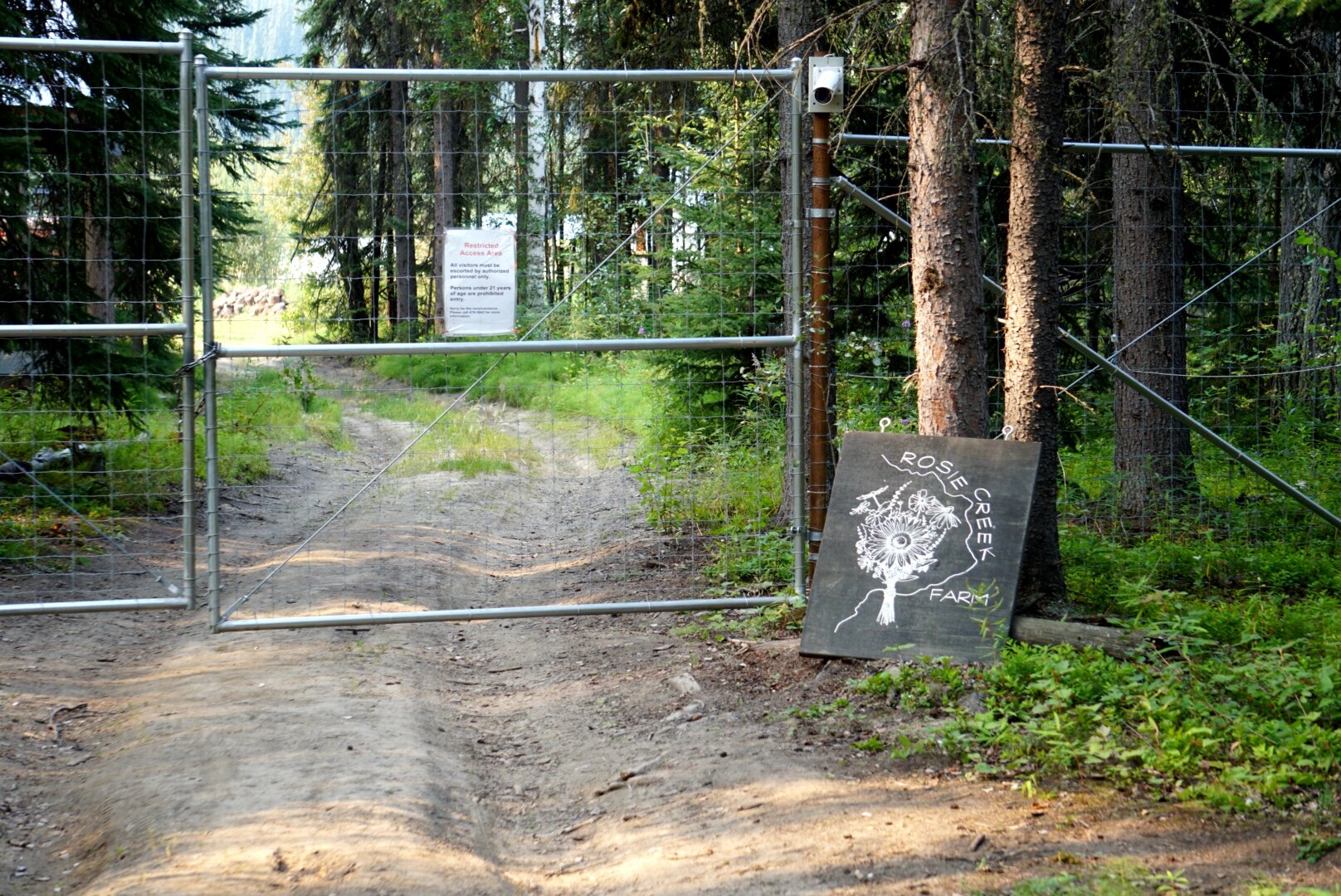SEASON II: INTRODUCTION
“We may be the breadbasket of the nation someday...I’d like to be on the forefront of that.”
EPISODE NOTES
It’s a grey morning in early March. I’m curled up by the window inside my cabin in McCarthy, Alaska, miles and miles from a grocery store or a restaurant or many other markers of modern American life. Across the room, the wood stove pumps.
We’ve had the coldest winter since I first moved here five years ago. Some community members who’ve been here far longer said they hadn’t seen those kinds of sustained cold temperatures in a long time.
It’s been refreshing, in a way. Especially after a particularly hot summer that felt a lot like climate change in action. It was scary. Wildfires hit places that are usually soaked in rain. Things felt on edge here, like they might explode at any moment.
Outside the cabin, tiny snow flurries dot the air. A couple feet of packed snow covers the forest floor, but the spruce trees stand naked, a reminder that things aren’t exactly back to normal. The trees shed the snow from their branches a few weeks ago after a warm spell. The river broke too.
The glacially-fed Kennicott River has been breaking mid-winter for the last few years. (Erin McKinstry / February 2020)
The glacier’s been doing that the last few years, letting go of a rush of water in the middle of winter. The frozen rivers are no longer reliable highways, which can spell trouble for subsistence activities. Things are changing all over Alaska. And that means good and bad things for all kinds of industries, including agriculture.
Mike Emers has been farming outside Fairbanks since 1997.
“Yeah, it's a big gamble farming,” Emers said. “but it’s gotten less so with the changing climate.”
Mike Emers stands in a field of marijuana at his farm outside Fairbanks, Alaska. He transitioned from growing vegetables to growing pot following legalization in the state. (Erin McKinstry / July 2019)
On season two of Out Here: Alaska agriculture and what climate change could mean for its future. Maybe, you didn’t even know you could grow things in Alaska. Here you’ll meet some of the innovative people giving it a go.
Growing here is no easy task. To make space for gardening, most people have to clear their own land and mix their own soil. I have no earthworms, no garden supply store, no tap to turn to water the garden in a mercilessly hot and dry July.
And I’m just doing it for myself. What if you’re chasing a farming dream here, that somewhat romantic notion that we can work the land locally and provide for our community instead of using massive amounts of energy acquiring food from far away places? In Alaska, that means investing time and money into a business venture that’s risky in places with better infrastructure and a more hospitable climate. Starting out can be a bit nerve-racking, said Sally Boisvert, who farms outside the southeast Alaska town of Haines.
“It was a challenge at first thinking, oh my gosh, I’ve done all this work clearing this land, will anyone want any vegetables?” Boisvert said.
Sally Boisvert and her two young children enter one of several high tunnels on her farm outside of Haines, Alaska. During the summer months, Boisvert runs the farm alone while her husband fishes. (Erin McKinstry / August 2019)
And then there’s the knowledge. I didn’t grow up with a big vegetable patch in the backyard, and I didn’t grow up in Alaska. Neither did Boisvert, although she did come to the state with agricultural experience. Still, it was a challenge.
“Then the challenge became, okay, let’s figure out how to grow things at 60 degrees North latitude, which is very different from 45 degrees North, which is where I’d been farming previously in Maine,” she said.
Yes, the long summer days can mean giant heads of cabbage and a fast turnover for certain vegetables. But Alaska’s growing season is also short and full of unpredictable and extreme weather patterns. That’s something that only seems to have gotten worse in recent years, says farmer Tenley Nelson, who lives about 50 miles down the road from me.
“I think it’s the unstableness of the weather that’s the most frustrating. Too much rain, then no rain at all. Too hot,” Nelson said.
Tenley Nelson feeds her chickens at her farm in Strelna, Alaska. Nelson began advertising her produce for the first time last year. (Erin McKinstry / September 2019)
But despite the challenges—known and unknown--I’m not alone in my gardening adventures here. It’s almost a given that you have some sort of garden in and around McCarthy, even if it’s just full of greens. There’s no big grocery store, and no local farmer’s market either.
“You can't buy organic garlic anywhere. You can't drive anywhere within five hours and get that product,” Nelson said. “But I can grow it and share it a little bit.”
Some of Tenley Nelson’s garlic harvest for the summer of 2019. (Erin McKinstry / September 2019)
Some places in Alaska aren’t as removed from food supply chains, but most food is still coming up on a barge from faraway places. And that leads to something that gets talked about quite a bit in Alaska: food security. It’s something many of the farmers I talked to brought up.
Alaskans are an independent bunch. Many provide for themselves whenever they can. The Alaska Native tradition of subsistence is strong: hunting, fishing, foraging, berry picking. The homesteading tradition is strong too: raising chickens, growing and canning food, making a weekly loaf of sourdough, that kind of stuff.
And then there’s the tradition of farming, where people feed themselves and their neighbors. It’s never been huge compared to regions like the Midwest, but it has been persistent. Some farmers even dream of feeding the rest of the country someday, like Scott Mugrage, a cattle rancher in Delta Junction, the once planned hub of a barley export industry.
“We may be the breadbasket of nation someday,” Mugrage said. “With the storm challenges and things going on in the lower 48 anymore, you know, and we very well have the potential to do that here, I think. And so, I’d like to be on the forefront of that.”
Scott Mugrage looks out on a field at his cattle ranch and farm near Delta Junction, Alaska. Mugrage and his son moved up from the Midwest after finding their land on the internet. (Erin McKinstry / July 2019)
Welcome to Season Two of Out Here, a podcast about life in rural Alaska. Here you’ll get some of the complicated story of Alaska agriculture from the perspective of Alaska farmers. It’s a story full of failure and innovation, one that defies stereotypes and looks quite a bit different from the mono-crop agriculture that dominates the lower 48.
We’ll fly to the Arctic to meet an Iñupiat woman who’s mixing Western agriculture with Native traditions. We’ll meet an apple grower, a cattle rancher and a seed grower. And we’ll talk about where we’ve been, where we’re going and what climate change could mean for farming here.
Maybe, by the end of it, you’ll want to plant something too.
Stay tuned and stay persistent.
Music from Blue Dot Sessions: Vibrant Canopy, Moon Bicycle Theme, Vela-Vela, Wistful / Featuring Mike Emers of Rosie Creek Farm, Kevin Irvin of Sundog Orchard, Rainey Nasuġraq Hopson of Gardens in the Arctic, Leah Wagner of Foundroot, Ina Jones of Alaska Homestead Peonies, Sally Boisvert of Four Winds Farm, Tenley Nelson of Wood Frog Farm, Scott & Justin Mugrage of Mugrage Cattle & Hay, Brian Olson of Alaska Berries, Pete & Lynn Mayo of Spinach Creek Farm and Rita Jo Shoultz of Alaska Perfect Peony / Financial Assistance from the Rasmuson Foundation



















